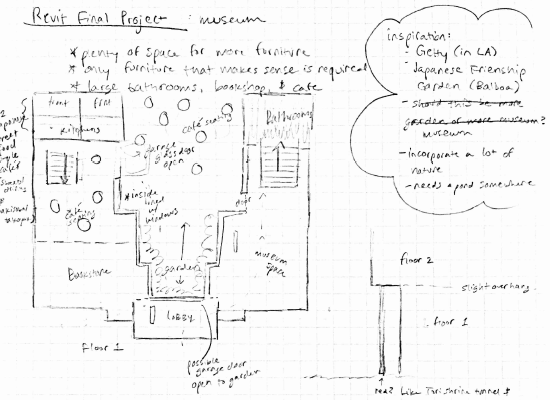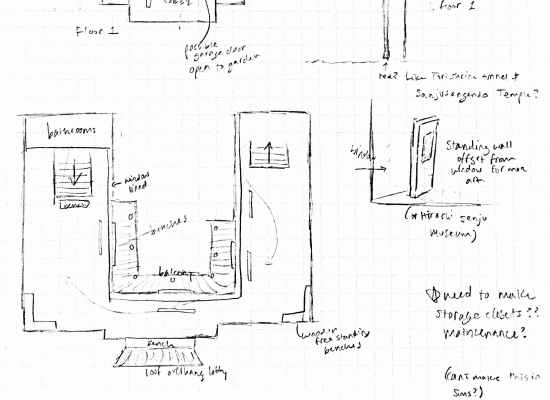Revit: Museum Model
For a final project in a Revit (architecture model and building software) course, I designed an art museum.
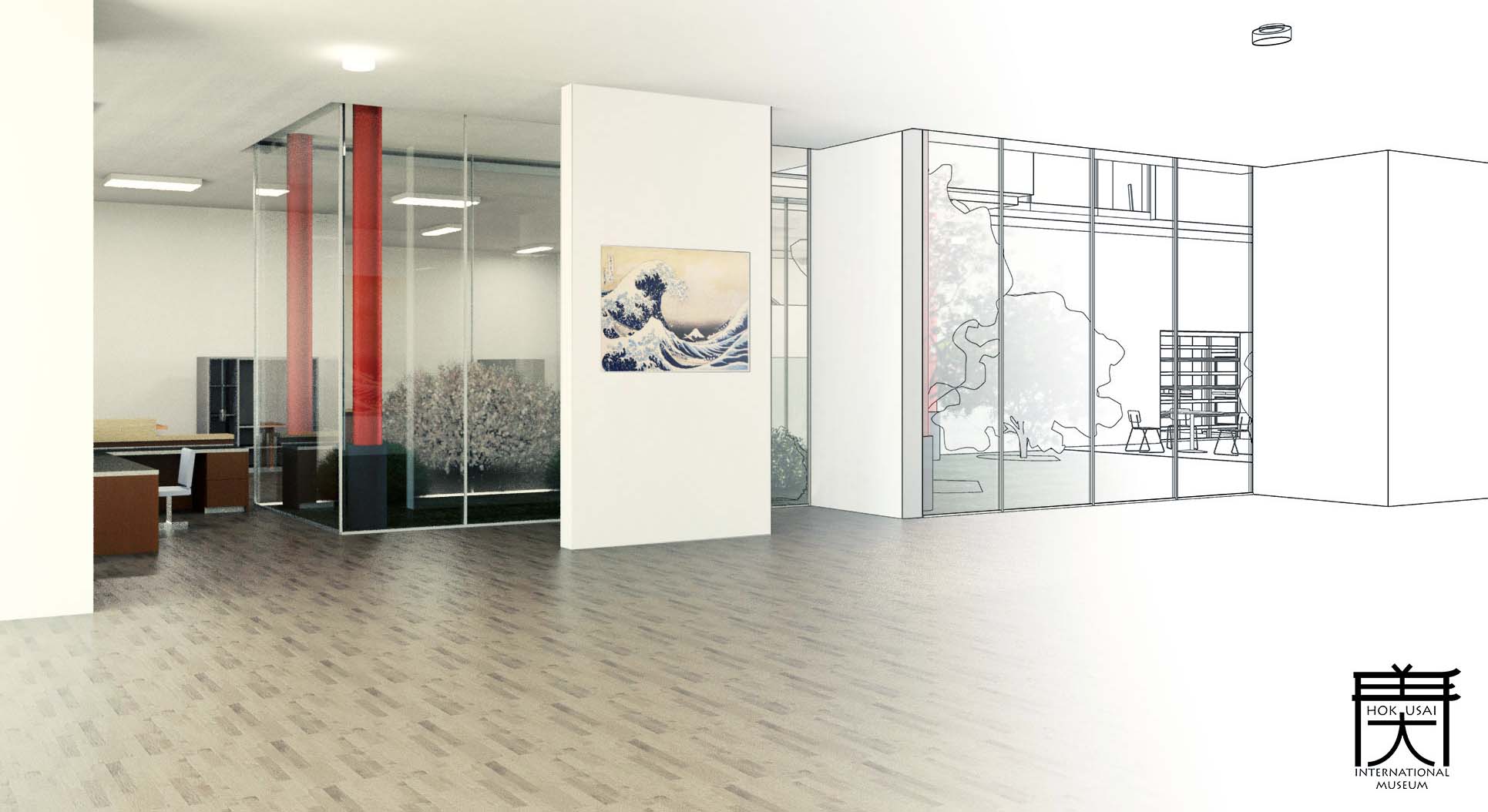
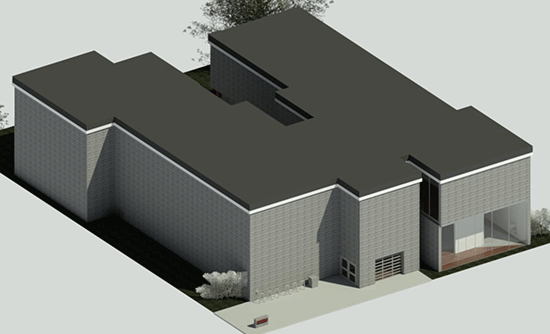
Timeline
Nov - Dec (2017)
Goals
- Create a multi-room structure with at least 2 floors and 1 bathroom per floor
- Compile deliverable pdfs with layouts, elevations, renders, callout details on architectural drawing sheets with a custom logo
- Personal goal: design a seriously dope museum
Check out the final compiled deliverable here.
Roles
Lead designer, lead engineer, lead complainer
I was inspired to design a museum for this project when I was walking through the Japanese Friendship Garden in Balboa Park. I wanted to create a space which would invoke the same sense of quiet serenity that permeates that space.
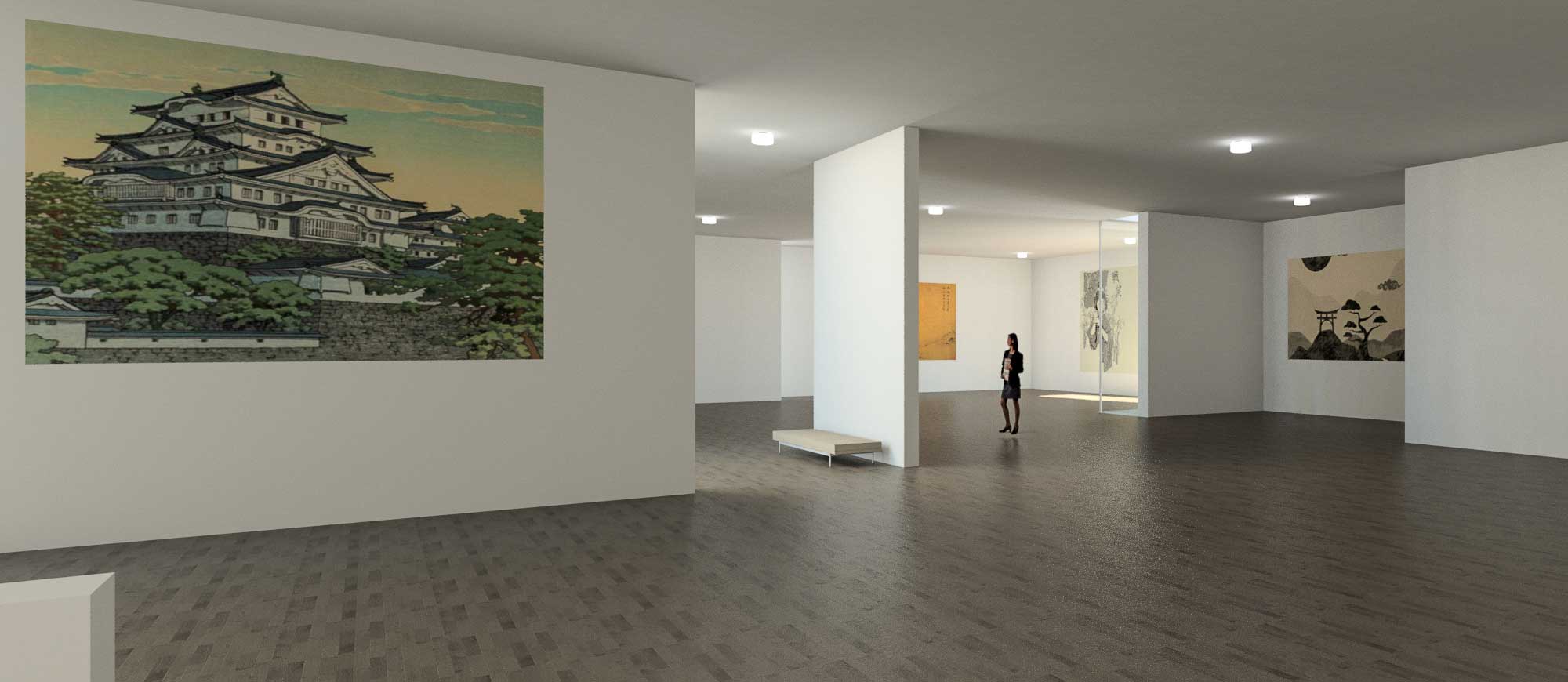
User Experience
Drawing heavily on modern Japanese architecture and minimalism, I endeavored to give this museum a downplayed look that would emphasize the art within and the nature surrounding it. To achieve this, I used floor to ceiling windows in strategic positions, to allow for natural light and avoiding direct sunlight on the art to prevent sun damage.
The red pillars on the inside of the U shape are a nod to the Fushimi Inari-taisha shrine and Torii; the Torii (red gates) are often found at the front of Shinto shrines, marking the symbolic transition from the everyday to spiritual space. The building's "U" shape offers room for a garden to be nested on the inside of the shape, such that the first thing a visitor would see when they entered the building, was the garden, framed by the red pillars. The pillars then also serve the function of increasing the size of the gallery on the second floor, without compromising the garden space below.
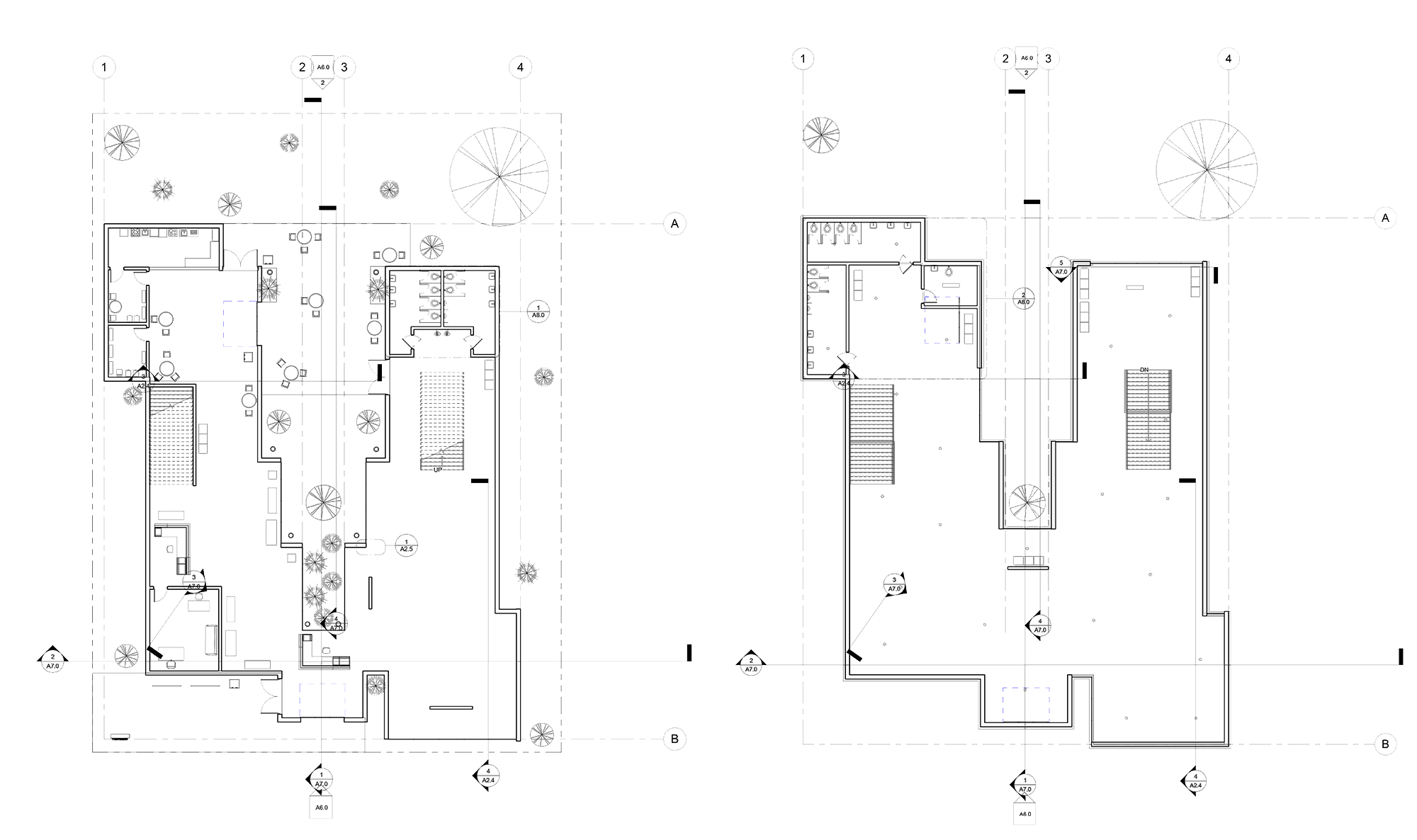
User Flow
I often visit galleries and museums for leisure, so I visited a number of museums in Balboa Park (San Diego) to intentionally observe flow. The U shape of the building is doubly functional because combined with the stairs, it leads customers through the shape with ease, guiding them to the gift shop and cafe at the end. Although most museums do not host cafes, I chose to include one because I felt it would encourage users to extend their stay and enjoy the space longer.
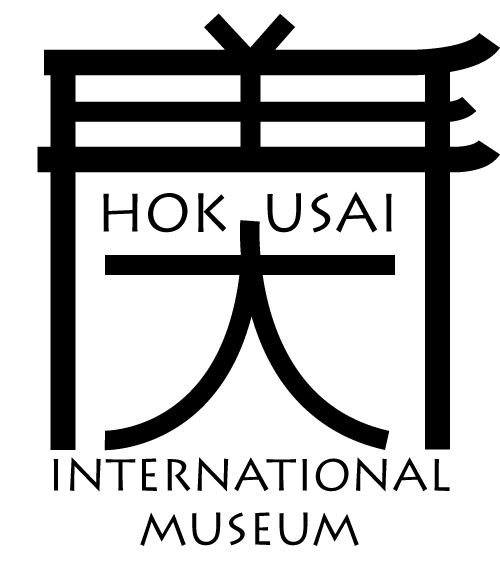
Logo and Brand
Keeping with this brand of Japanese-inspiration, the logo is a play on the shape of the Torii gates and the strokes of the word "beautiful" written in Kanji. I named my Japanese-inspired museum after Hokusai, the real Japanese artist who painted the iconic The Great Wave off Kanagawa.
Initial Sketches
